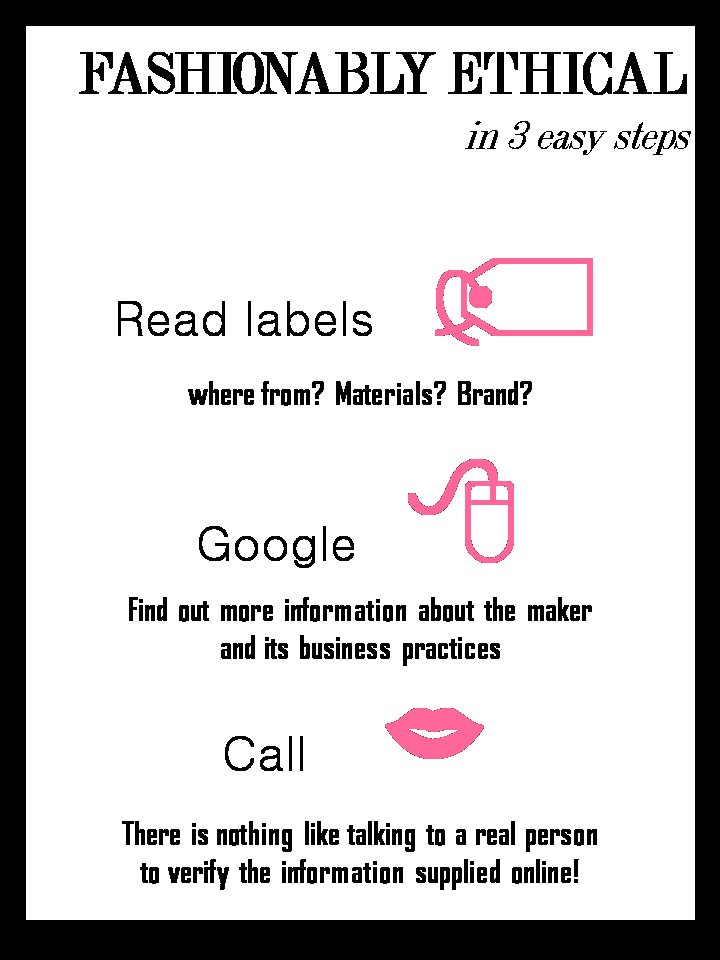“Eww! I’m gonna have to go online and spend a lot of time before deciding what to buy…”
Contributing to the ethical fashion mission doesn’t have to be hard or boring. There is not a massive number of hours needed in order to take initiative and be more conscientious when deciding what companies you will give your hard earned money to.
I like to break it up into 3 steps, and this is most useful when going out to a store or finding yourself in an USS (unexpected shopping situation).
Reading the labels. General information is contained in the several tags most garments come with: made in, materials, care, brand and sometimes company information such as website and address. This is just general and minimal information that should not used isolated from additional facts in order to evaluate a brand or garment. Some sanity checks:
- If they are charging you $100 for a 100% polyester item, something is wrong.
- If the tag says “silk” and it costs $10, I would double-check that fact
- Made in China is not always bad, there are companies trying to do things right in China, Bangladesh and other cheap labor countries.
- Made in the USA is not always good, I would still try to get more info on the company.
- In general “too cheap to be true” should signal something could be wrong. Unless it’s a super duper sale, too cheap tends to mean that the real costs are hidden and being paid by others.
Going online. It’s the easiest and fastest way to get a company profile, location and values. Even the design of the website is important when evaluation the legitimacy of a brand: if it looks like they made it in 30 minutes, has a low page rank, or there is very little information about the maker, flag. If the company is “ethical”, they should address that on their About page, but be mindful that this is also a marketing strategy and that companies might be using this to attract certain consumers when they aren’t really making reasonable efforts to be “ethical”. Similarly, there are many companies that are the most ethical thing you could ever find but do not really talk about their business practices.
What I want to find on a website:
- About us page with a good description of the company
- An address
- A phone number
- Transparent operations (do they have factories somewhere else?)
Calling. The good old phone call will clear many of your doubts pretty quickly.
- Are they really in the US? Is this a call canter?
- Can they answer simple questions like: where are the clothes made?
- Are they professional and friendly, providing the good customer service real companies should?
- Did you feel the person was honest when answering your questions?
- Keep in mind that most times, when you call, you are talking to a costumer service representative and not the CEO. They might not have all the answers but should be able to help you to the best of their abilities.
(Email) This is a very obvious one, it’s not even on my graph because I would think that’s the first place where you would try to get an answer. Reply times (if they reply at all) and level of service when attending your inquiries are important sings of a company that wants to be serious and takes care of its customers and vendors.
Love,
Yarina

